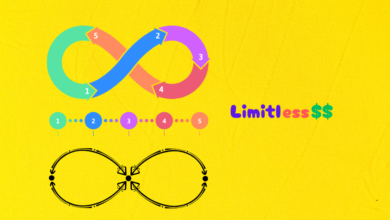What is the internalized homophobia workbook by richard isay?

Are you tired of feeling like you’re hiding a part of yourself? Do you yearn to embrace your true identity without fear or shame? If so, then the Internalized Homophobia Workbook by Richard Isay might just be the key to unlocking your authentic self. In this blog post, we’ll explore what exactly this workbook is all about and how it can help individuals struggling with internalized homophobia. So sit back, relax, and get ready to embark on a transformative journey towards self-acceptance and empowerment!
Who is Richard Isay?
Who is Richard Isay? He was a renowned psychiatrist and psychoanalyst who dedicated his career to understanding and supporting the LGBTQ+ community. Isay played a significant role in challenging societal norms and prejudices, particularly regarding homosexuality.
Isay was born on December 13, 1934, in Brooklyn, New York. He obtained his medical degree from Cornell University Medical College before delving into psychiatry. As a gay man himself, Isay experienced firsthand the effects of internalized homophobia within both his personal life and professional practice.
Throughout his career, Isay conducted extensive research on sexual orientation and its impact on mental health. His groundbreaking work emphasized the importance of self-acceptance for LGBTQ+ individuals struggling with internalized homophobia.
In addition to his research contributions, Isay authored several influential books that have become essential resources for many in the LGBTQ+ community. One of these notable works is “Becoming Gay: The Journey To Self-Acceptance,” which explores how individuals come to accept their sexual orientation amidst societal pressures.
Richard Isay’s legacy continues through his impactful writings and dedication to advocating for the rights and well-being of LGBTQ+ individuals. His work serves as an inspiration for mental health professionals seeking to create inclusive spaces where people can embrace their true selves without fear or shame.
Exploring Internalized Homophobia
Internalized homophobia is a complex and deeply rooted issue that many individuals within the LGBTQ+ community face. It refers to the internalization of negative beliefs, stereotypes, and prejudices about one’s own sexual orientation or gender identity. This can lead to feelings of shame, self-hatred, and denial.
In Richard Isay’s groundbreaking workbook on internalized homophobia, he delves into the various aspects of this phenomenon. The workbook encourages individuals to examine their own thoughts, emotions, and behaviors in relation to their sexual orientation. Through introspective exercises and activities, participants are encouraged to confront their fears and challenge the negative beliefs they have internalized.
By exploring internalized homophobia in a safe and supportive environment, individuals can begin to unravel its impact on their lives. They can gain insight into how it may have affected their relationships with others as well as themselves. This process allows for personal growth and self-acceptance.
Isay’s workbook provides an opportunity for individuals to explore these deep-seated issues at their own pace. It offers guidance through thought-provoking questions and encourages reflection on experiences related to internalized homophobia.
While exploring such sensitive topics can be challenging, it is also empowering. By confronting our fears head-on we pave the way for healing and acceptance. The workbook serves as a valuable tool in helping individuals untangle the complexities of internalized homophobia.
It is important to note that exploring internalized homophobia is not a linear journey nor does it happen overnight. However, by engaging with Isay’s workbook consistently over time, many people have reported significant positive changes in how they view themselves and others within the LGBTQ+ community.
The road towards self-acceptance may come with obstacles along the way but taking those first steps towards exploration can be transformative for those struggling with internalized homophobia.
The Purpose of the Workbook
The Internalized Homophobia Workbook by Richard Isay serves as a valuable tool for individuals who are seeking to understand and overcome their internalized homophobia. This workbook is designed to guide readers through a series of exercises and activities that promote self-reflection, exploration, and personal growth.
The main purpose of the workbook is to help individuals recognize and challenge the negative beliefs, attitudes, and behaviors they have internalized due to societal stigma surrounding homosexuality. By engaging in the exercises provided in the workbook, readers can gain insight into how these deeply ingrained beliefs may be affecting their self-esteem, relationships, and overall well-being.
Through this process of introspection and reflection, individuals can begin to dismantle harmful stereotypes about themselves and others within the LGBTQ+ community. The workbook encourages readers to examine their own experiences with discrimination or prejudice while offering guidance on how to develop resilience and cultivate self-acceptance.
Moreover, another important aspect of the workbook’s purpose is fostering a sense of empowerment among its users. It aims to provide practical strategies for combatting internalized homophobia so that individuals can live authentically without fear or shame. This resource seeks to support people in embracing their true selves while promoting positive mental health outcomes.
By utilizing the Internalized Homophobia Workbook as intended – actively participating in its exercises – readers have an opportunity for transformative growth towards self-acceptance.
Exercises and Activities in the Workbook
The Internalized Homophobia Workbook by Richard Isay is designed to help individuals explore and overcome their internalized homophobia. One of the key components of this workbook are the exercises and activities that guide readers through a process of self-reflection and personal growth.
These exercises are carefully crafted to address different aspects of internalized homophobia, such as negative self-talk, shame, fear, and societal pressures. They provide opportunities for individuals to challenge their beliefs, confront their fears, and develop healthier attitudes towards themselves and their sexual orientation.
For example, one exercise may ask readers to identify negative thoughts or beliefs they hold about being LGBTQ+ and then evaluate them critically. Another activity might involve creating a list of positive affirmations that counteract these negative beliefs.
In addition to written exercises, the workbook also includes interactive activities that encourage readers to engage with others in supportive communities. This can be particularly helpful for individuals who feel isolated or struggle with forming healthy connections due to internalized homophobia.
It’s important to note that while these exercises can be challenging at times, they are ultimately meant to empower individuals on their journey towards self-acceptance. Each person’s experience will be unique, but many have reported significant personal growth and increased self-esteem after working through the activities in this workbook.
By engaging actively with the content provided in this workbook, users have an opportunity not only to gain insight into their own experiences but also connect with others who may share similar struggles. The combination of individual reflection coupled with community support creates a powerful environment for growth and healing.
When approaching these exercises within the Internalized Homophobia Workbook by Richard Isay it’s essential for users always be open-mindedness as they work through each activity at their own pace. Remembering that progress takes time is crucial; what matters most is taking steps forward on your personal journey towards self-acceptance
Success Stories from Using the Workbook
One of the most inspiring aspects of Richard Isay’s Internalized Homophobia Workbook is the countless success stories that have emerged from its use. People from all walks of life, struggling with internalized homophobia, have found solace and healing through this transformative workbook.
In one story, a young man named Alex felt immense shame and self-hatred due to his sexual orientation. He had always believed that being gay was wrong and sinful. However, after working through the exercises in the workbook, he began to challenge these deeply ingrained beliefs. Through self-reflection and compassion, Alex gradually let go of his internalized homophobia and embraced his authentic self.
Another individual named Emily struggled with accepting her same-sex attraction for years. She constantly lived in fear of judgment from others and suppressed her true identity. The workbook provided a safe space for Emily to confront her fears head-on. By engaging in various activities outlined in the book, she gained confidence and started embracing her sexuality proudly.
These are just two examples among many success stories that highlight the power of Richard Isay’s Internalized Homophobia Workbook as a catalyst for personal growth and acceptance. Each person’s journey is unique but equally significant.
By sharing these success stories, we can recognize that change is possible – even when it feels impossible at times. It demonstrates how individuals can overcome their internal struggles by actively engaging with their emotions and beliefs surrounding homosexuality.
The journey towards self-acceptance may be long and challenging, but it is vital for living an authentic and fulfilled life as an LGBTQ+ individual. The Internalized Homophobia Workbook has proven itself time and again as a valuable tool on this path towards liberation.
If you’re struggling with internalized homophobia or know someone who is, consider exploring this transformative resource to embark on your own journey toward self-discovery—because everyone deserves love without conditions or limitations!
Criticisms of the Internalized Homophobia Workbook
While the Internalized Homophobia Workbook by Richard Isay has been praised for its thought-provoking exercises and potential to promote personal growth, it is not without its critics. Some argue that the workbook oversimplifies a complex issue and fails to address systemic factors that contribute to internalized homophobia.
One major criticism is that the workbook places too much emphasis on individual responsibility, suggesting that overcoming internalized homophobia is solely an individual journey rather than recognizing the impact of societal norms and discrimination. Critics argue that this approach can perpetuate feelings of guilt and shame in individuals who are already struggling with their sexual identity.
Another concern raised by some experts is that the workbook does not adequately address intersectionality – the overlapping experiences of multiple marginalized identities. This omission may make it less applicable or effective for individuals who face additional forms of discrimination based on race, gender, or socioeconomic status.
Additionally, there have been criticisms about potential cultural insensitivity within some exercises in the workbook. It is important to recognize and respect diverse cultural perspectives when addressing issues related to sexuality, as different cultures may have unique beliefs and attitudes towards homosexuality.
Despite these criticisms, it’s worth noting that no single resource can be expected to cater perfectly to every individual’s needs. The Internalized Homophobia Workbook has undoubtedly helped many people navigate their own experiences with internalized homophobia and find acceptance within themselves. However, it remains essential for individuals using this resource or any similar tool to seek support from mental health professionals or LGBTQ+ community organizations alongside their self-guided work.
Conclusion: Is the Workbook Effective?
After exploring the Internalized Homophobia Workbook by Richard Isay, it is clear that this resource has had a significant impact on individuals struggling with internalized homophobia. The workbook provides a safe and structured environment for self-reflection and growth, allowing readers to confront their fears and negative beliefs about their sexual orientation.
The exercises and activities in the workbook are designed to challenge these deeply ingrained thoughts and help individuals develop more positive attitudes towards themselves as LGBTQ+ individuals. By actively engaging in these exercises, readers can begin to dismantle the barriers created by internalized homophobia.
Many success stories have emerged from those who have used the Internalized Homophobia Workbook. People have reported increased self-acceptance, improved relationships with friends and family members, enhanced mental well-being, and an overall sense of personal empowerment. These achievements highlight the effectiveness of this resource in supporting LGBTQ+ individuals on their journey towards self-compassion and acceptance.
However, it’s important to acknowledge that every person’s experience is unique, and what works for one individual may not work for another. Some critics argue that the workbook oversimplifies complex issues surrounding internalized homophobia or fails to address other intersecting identities such as race or gender.
Nevertheless, despite its limitations, many people find value in using the Internalized Homophobia Workbook as a tool for personal growth. It offers practical guidance for challenging harmful beliefs while fostering a greater understanding of oneself as an LGBTQ+ individual.
In conclusion (without stating “In conclusion”), if you are someone grappling with internalized homophobia or know someone who is facing similar struggles, Richard Isay’s Internalized Homophobia Workbook could be a valuable resource worth exploring. Remember that unlearning deeply ingrained negative beliefs takes time and commitment; however, taking steps toward self-acceptance can lead to profound personal growth and liberation from harmful societal expectations.



